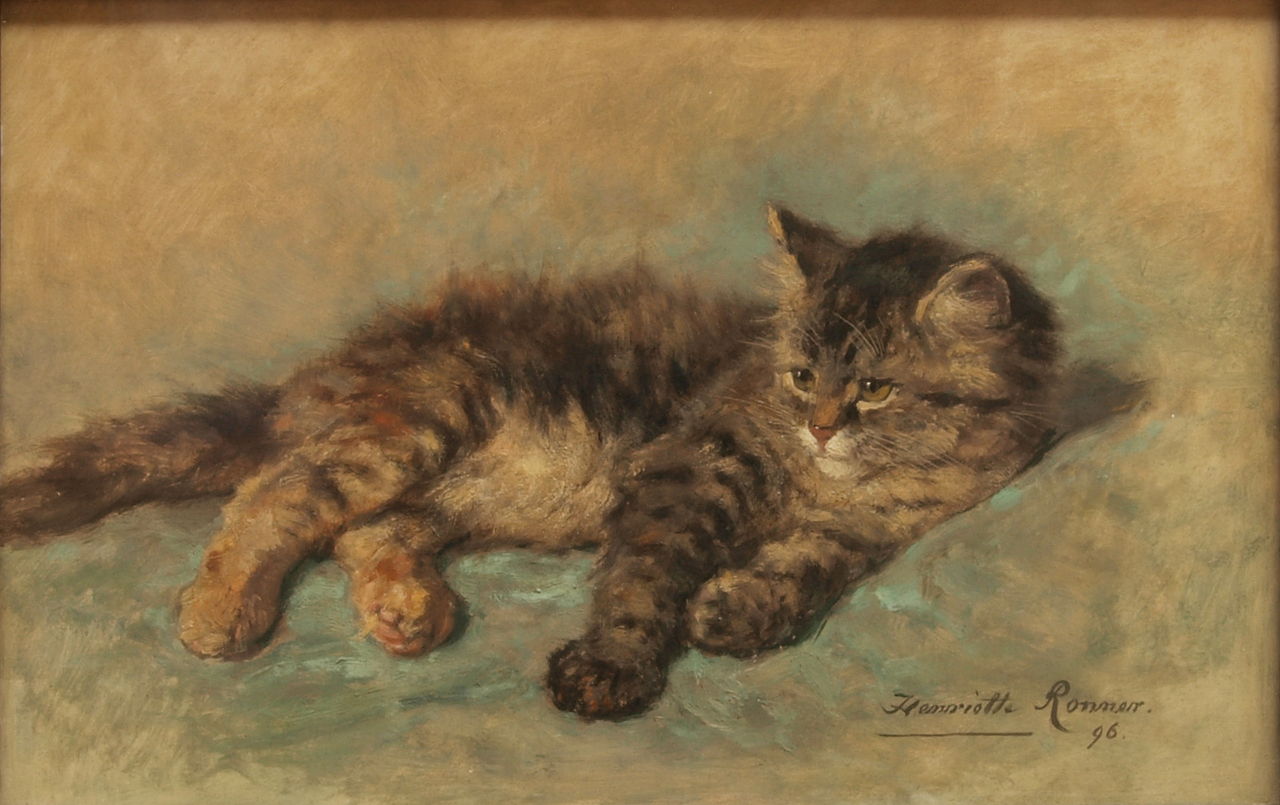
I wish she would not ask me if I love the Kitten more than her.
Of course I love her. But I love the Kitten, too; and it has fur.
— Josephine Preston Peabody, The Book of the Little Past, 1908

I wish she would not ask me if I love the Kitten more than her.
Of course I love her. But I love the Kitten, too; and it has fur.
— Josephine Preston Peabody, The Book of the Little Past, 1908
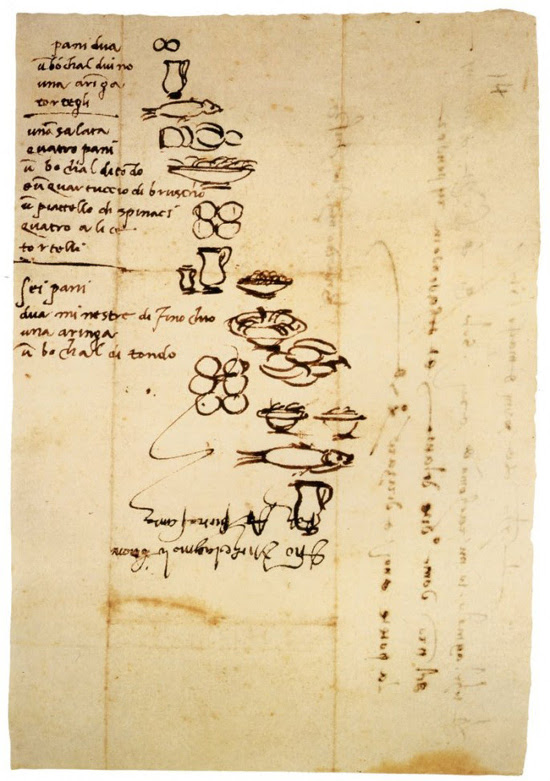
When the Seattle Art Museum presented an exhibition of Michelangelo’s early drawings in 2009, it included three menus that the sculptor had scrawled on the back of an envelope in 1518 — grocery lists for a servant.
Oregonian reviewer Steve Duin explained, “Because the servant he was sending to market was illiterate, Michelangelo illustrated the shopping lists — a herring, tortelli, two fennel soups, four anchovies and ‘a small quarter of a rough wine’ — with rushed (and all the more exquisite for it) caricatures in pen and ink.”
Related: In the 1490 manuscript below, Leonardo da Vinci tries to list successive doublings of 2 but mistakenly calculates 213 as 8092:
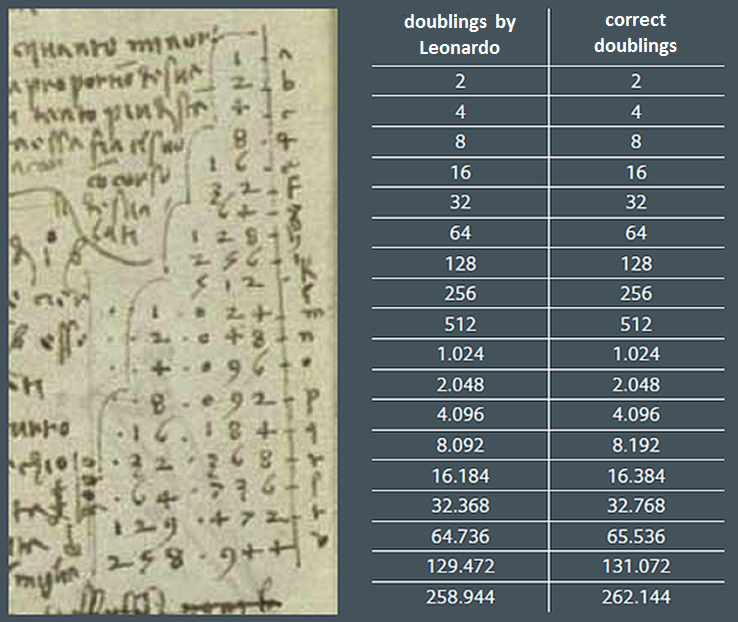
“Unmistakable this is a miscalculation of Leonardo and not of some sloppy copyists, as it was found in the original (mirrored) manuscript of da Vinci himself,” notes Ghent University computer scientist Peter Dawyndt. “That it was only discovered right now, five hundred years after da Vinci’s death, is probably due to the late discovery of the manuscript, barely fifty years ago.”
(Thanks, Peter.)
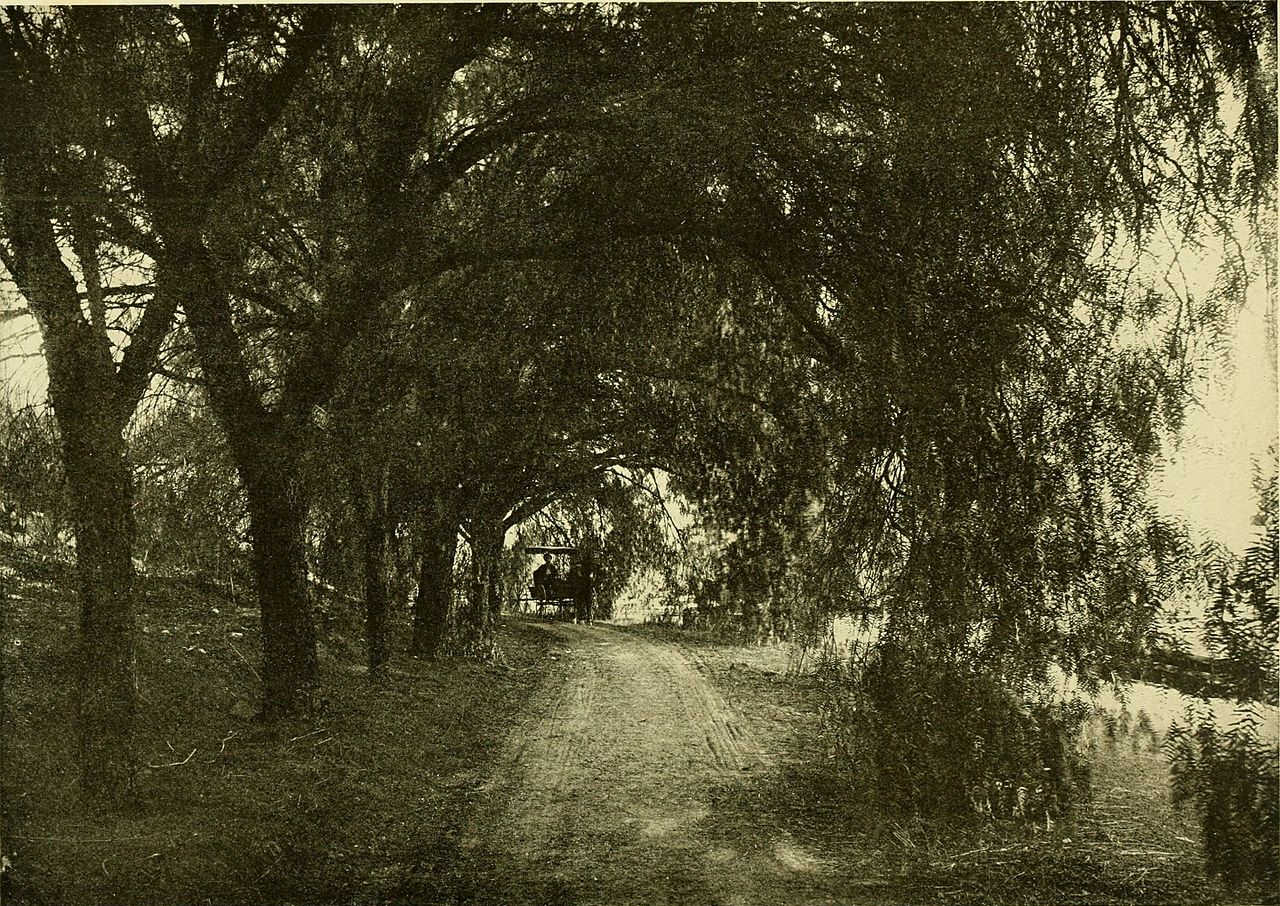
In the February 2003 issue of Word Ways, Dave Morice nominates PEPPERTREE as the “holy grail” of wordplay. PEPPERTREE is a “pyramid word” — it contains 1 T, 2 Rs, 3 Ps, and 4 Es:
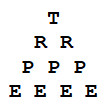
But it contains two shorter pyramid words, PEPPER and PEP:

Also:
Altogether, Morice lists 26 ways in which PEPPERTREE is notable for its letters, pronunciation, and meaning, making it “an evergreen of the most alphabetic kind.” The whole list is here.
(Dave Morice, “Peppertree: The Logological Holy Grail,” Word Ways 36:1 [February 2003], 3-5.)
What number comes next in this sequence?
2, 4, 6, 30, 32, 34, 36, 40, 42, 44, 46, __
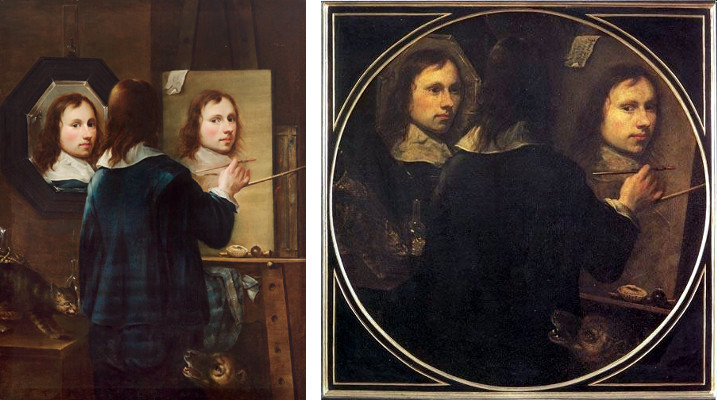
The Austrian painter Johannes Gumpp is remembered for only two works.
Both are self-portraits in which his back is turned to the viewer.
The earliest known film comedy, Louis Lumière’s 1895 L’Arroseur arrosé (“The Waterer Watered”) is also one of the first film narratives of any kind — before this, movies tended simply to demonstrate the medium, depicting a sneeze, for example, or the arrival of a train.
This was also the first film with a dedicated poster (below) — making this simple 45-second story the forerunner of all modern film comedies.
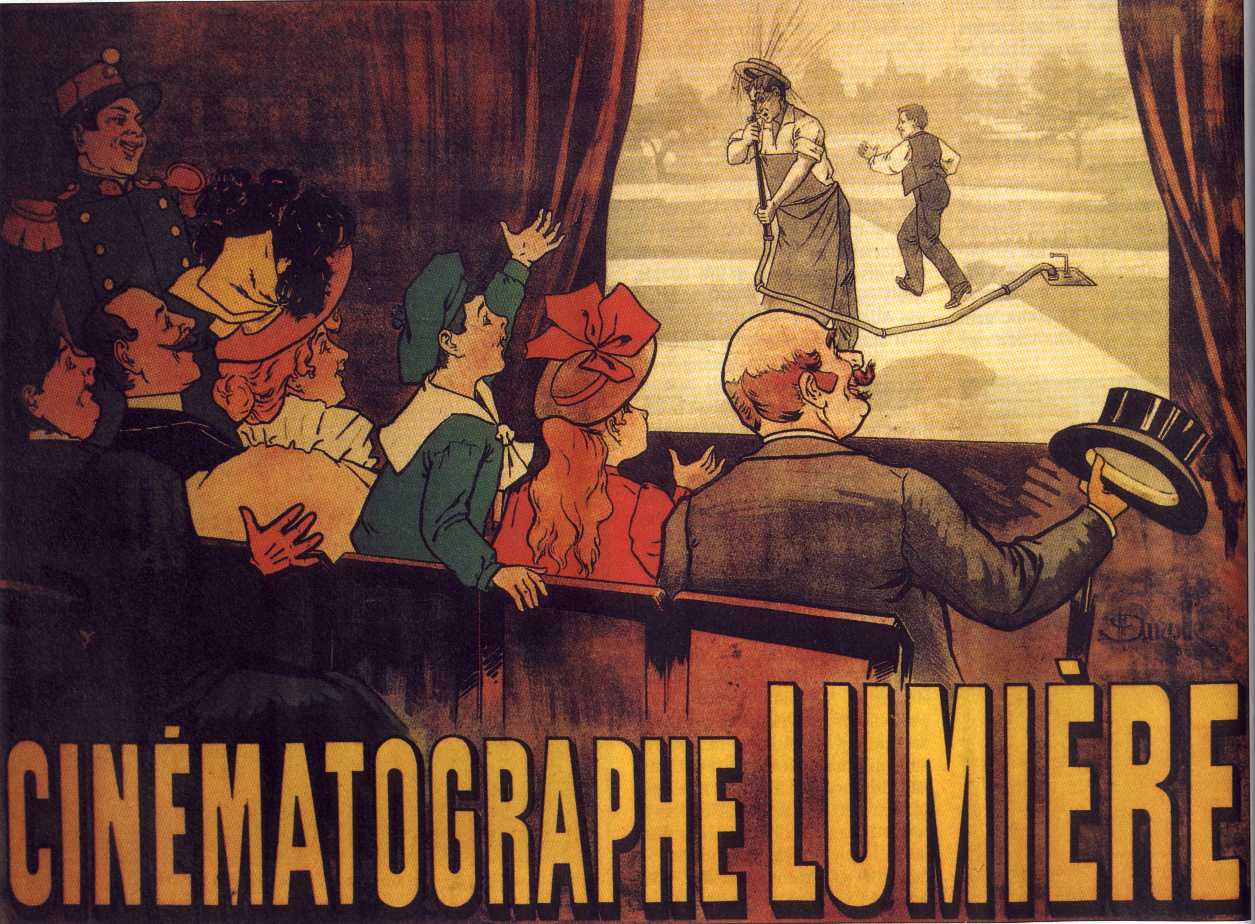
I know of only one triple pun that is also an accurate touché. A visitor who came in upon the wife of Sir Herbert Beerbohm Tree while she was giving her daughter a geography lesson, asked the child: ‘What is the capital of the Rothschilds?’ Answered the mother: ‘Bering Straits.’ (The Baring family, it is perhaps permissible to add, were the great rival English bankers.)
— Louis Kronenberger, The Cutting Edge, 1970

In 1924 two British mountaineers set out to be the first to conquer Mount Everest. But they never returned to camp, and to this day no one knows whether they reached the top. In this week’s episode of the Futility Closet podcast we’ll review the case of George Mallory and Andrew Irvine, which has been called “one of the greatest unsolved adventure mysteries of the 20th century.”
We’ll also learn what to do if attacked by a bear and puzzle over the benefits of a water shortage.
10/15/2024 UPDATE: In September 2024, Irvine’s partial remains were discovered 7,000 feet below Mallory’s. The cameras are still missing.
A problem from the 1996 Georg Mohr mathematics competition in Denmark:
n is a positive integer. The next-to-last digit in the decimal expression of n2 is 7. What’s the last digit?
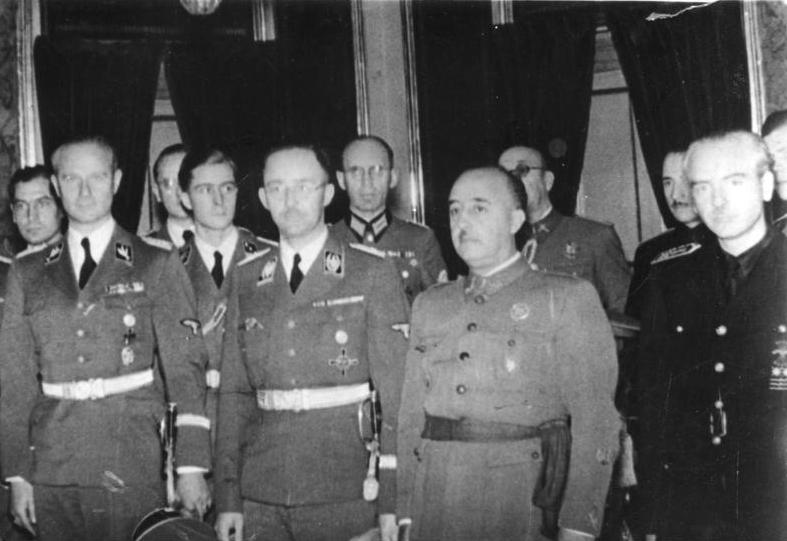
Politicians and public figures may well care to ponder the story of the death of Franco. Surrounded on his deathbed by his faithful generals, he heard outside, beyond the heavily drawn curtains, a strange subdued noise like the sea, and asked someone to investigate. An aide did. He looked down from the palace balcony and returned with a lump in his throat and tears in his eyes and reported: ‘Caudillo, it is the people. Thousands of them. They have come to say goodbye.’ And Franco raised himself on one elbow and barked: ‘Why? Where are they going?’
— British Airways parliamentary affairs officer Norman Lornie to Jack Aspinwall, MP, for his 2004 collection Tell Me Another!